Norco Fluid VLT
Wheel Size: 29’’ front / 27.5’’ rear
Travel: 130 or 140 mm rear / 140 or 150 mm Front
- Sizes offered: 1, 2, 3, 4, 5
- Headtube angle: 65° (VLT 130) / 64.5° (VLT 140)
- Seat tube angle (Size S3): 77º (VLT 130) / 76.5º (VLT 140)
- Reach (Size S3): 477 (VLT 130) / 472.5 (VLT 140)
- Chainstay length: 436 mm (Size S3)
- Motor: Bosch Performance Line SX
- Torque: 55 Nm
- Power: 600 W
- Battery: 400 Wh
- Display: Bosch System Controller
- Remote: Bosch Mini Remote
Material: Carbon fiber front triangle; aluminum and carbon fiber rear triangle options
Price: Complete bikes $5,999 to $11,499
Blister’s Measured Weight: 39.38 lb / 17.86 kg (Fluid VL 130 C1, S4, tubeless)
Test Locations: Buena Vista & Crested Butte, CO
Reviewers:
- Simon Stewart: 6’, 170 lbs / 183 cm, 77 kg
- Dylan Wood: 5’10.5″, 160 lbs / 179 cm, 72.5 kg
Test Duration: 4 months
[Note: our review was conducted on the Fluid VLT 130]
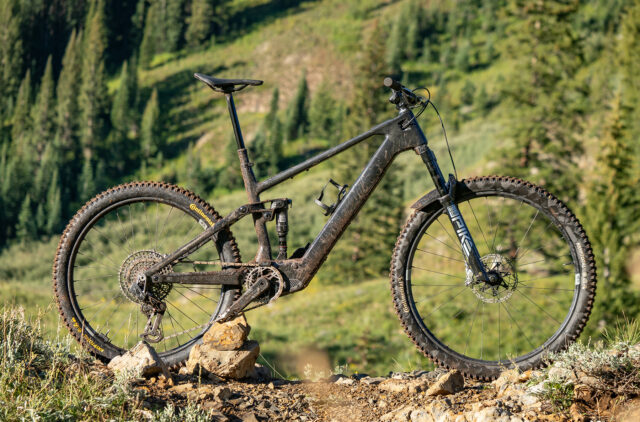
Intro
The new Fluid VLT is a much needed addition to Norco’s eMTB line, and their first foray into the lightweight eMTB category. Designed around the Bosch Performance Line SX drive system, the Fluid VLT looks well equipped to take on this hot segment.
At first glance the Fluid VLT appears to take a fairly safe and straightforward approach — take the existing non-powered Fluid Carbon and add a lightweight motor. But dig a little deeper and there is an easter egg in there. The Fluid VLT C1 130 is claimed to come in under 40 lbs / 18.1 kg — eMTBs under 40 lbs aren’t exactly common, which puts it in pretty rare company. Not to mention none of the eMTBs I can think of in the sub 40 lb club are packing a motor capable of 600 watts either.
We’ve spent the last few months aboard the Fluid VLT 130 and you can read our Full Review below. But first, let’s get into the details on the Fluid VLT platform.
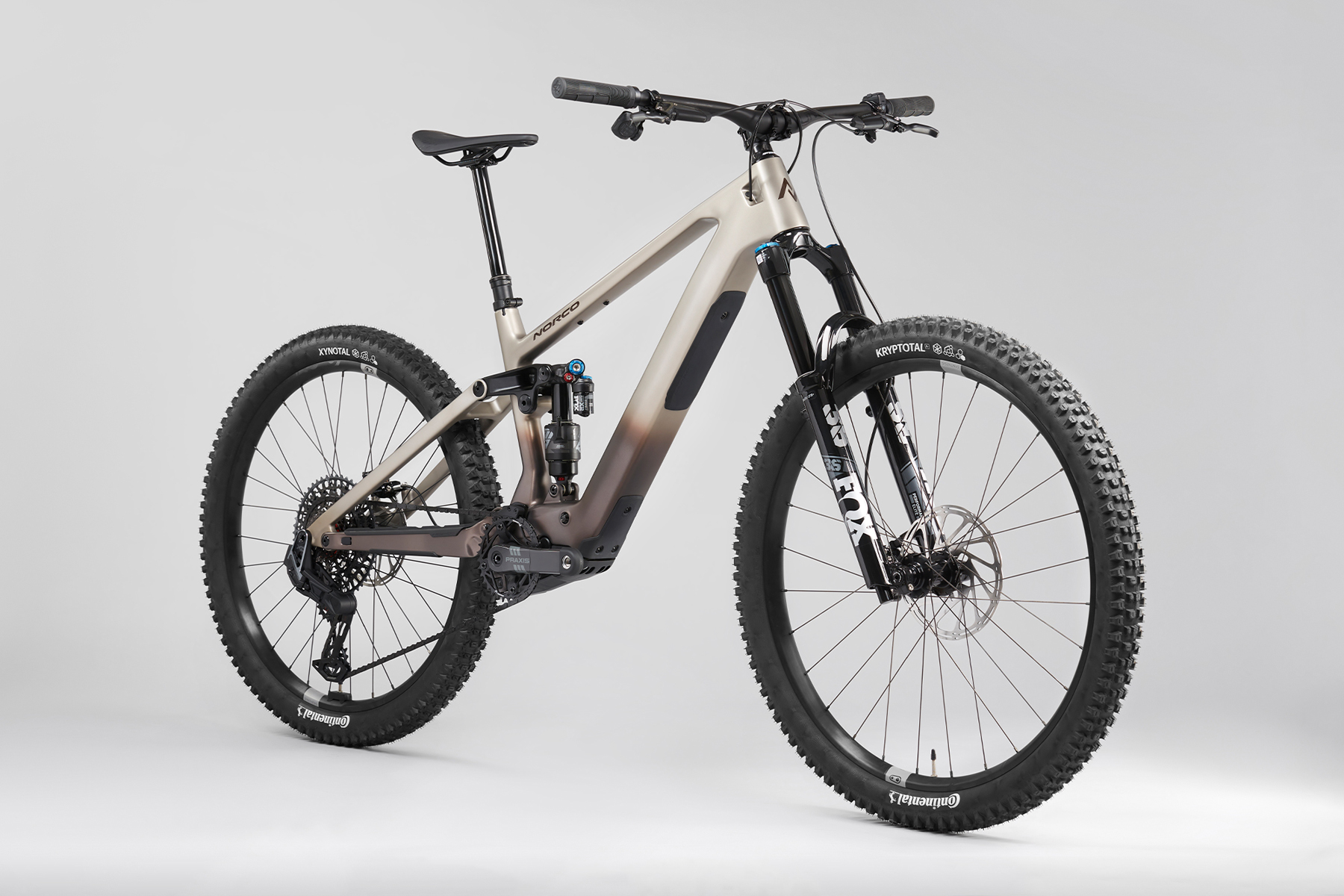
The Frame
Norco’s new Fluid VLT carbon frames have adopted a very similar design language to their non-powered Fluid mountain bikes. Gone is the horizontal shock placement used in the rest of their full suspension eMTB line in favor of vertical placement. With the exception of their new high pivot bikes, the Fluid VLT looks a lot more like a traditional Norco.
The frame features either 130 or 140 mm of rear suspension travel, which is achieved via a 50 or 55 mm stroke shock (in a 185 mm Trunnion mount for both). The Fluid VLT retains Norco’s Horst Link four-bar suspension layout, but since Norco hasn’t published suspension graphs we can’t comment on the kinematics. The rear triangle on the C1 builds is carbon, and aluminum on the C2 and C3 builds; the front triangle is offered in carbon fiber only. Living in an extremely rocky place, I don’t mind an alloy swingarm one bit since it is an area of the bike that routinely gets punished on my local trails.
All the Fluid VLT builds are mixed wheel size, with no geometry adjustability for other configurations. The chainstays are size specific on all sizes except sizes 1 and 2 which share the same length. The seat tube angle also varies for each size, steepening incrementally from size 1 through size 5.
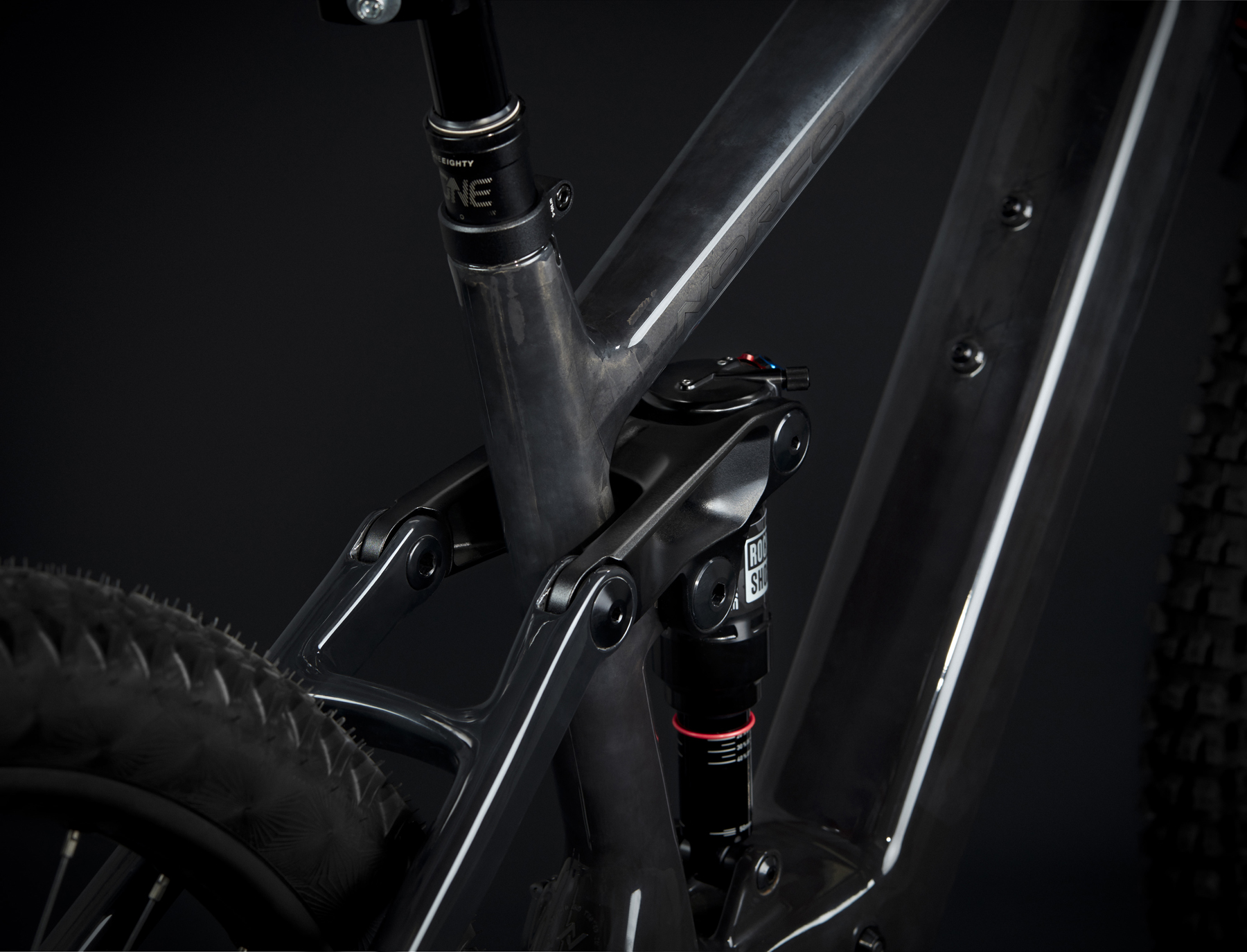
Internal cable routing, UDH compatibility, integrated chainguide, tool storage mounts, and room for a water bottle on all sizes round out the frame details. The Fluid VLT is covered by Norco’s No Other Way Limited Lifetime Warranty.
The Fluid VLT is included in Norco’s Ride Align setup guide, which is a web based setup app that offers tons of setup recommendations with the aim of taking the guesswork out. For a more detailed overview of the Ride Align app, check out our Norco Sight and Optic First Look.
Drive System
Bosch launched the Performance Line SX (PLSX) drive system back in June of last year. We mentioned in our Santa Cruz Heckler SL review that we were expecting to see lightweight eMTBs with this drive system to start surfacing (and to be clear, there already have been a couple in Europe). The Norco Fluid VLT is one of the first to come to market in the US, and will be the first one we are getting in for review. Bosch’s full-power drive systems top my list of favorite motors, so I’m eager to spend some time on the new lightweight version.
Weight is a major consideration for drive systems in this category, and the claimed combined weight of 8.8 lbs / 4 kg for the motor and battery of the Bosch PLSX is competitive. Notice I didn’t say total system weight because that number doesn’t include the remote, or the system controller, since Bosch doesn’t publish the weight for those bits. Fazua claims a total system weight including remote and display of 9.2 lbs / 4.2 kg, so when factoring in the Bosch system’s remote and display, I bet they end up being very close. The TQ drive system, on the other hand, is still the lightest at 8.6 lbs (including display and remote), but it also has the lowest power and smallest battery.
Bosch states the weight savings (over the full-power motor) are the result of a more compact design, optimized crankshaft, fewer slots (not sure what that means), and a magnesium housing.

What really stands out for the PLSX motor is its max power number of 600 watts. This is the same max power as their full-power motors and is honestly a little nutty (and awesome) to think about. There is a caveat though — because the motor produces less torque (55 Nm vs 85 Nm), and since power is a result of torque and cadence, then that 600 watts comes at a significantly higher cadence than the full-power motor.
Both the Fazua and TQ drive systems claim to have no mechanical resistance when ridden unpowered, which having spent time on both systems they do feel like it. The Bosch PLSX motor claims a 50% reduction in drag over their full-powered motors, but this means it will still have some mechanical resistance — this is an area I’ll be paying close attention to since pedaling past the motor cut-off point on lightweight eMTBs is definitely something I do often.
The Mini Remote and System Controller are the same as what you get on other Bosch Performance Line drive systems. I go into them, as well as the eBike Flow app, in more detail in the Orbea Wild review.
Fit & Geometry
The Fluid VLT is available in five sizes, labeled Size 1 through Size 5. I think the sizing roughly aligns with Small through XXL, although the Size 1 is pretty small and looks closer to an XS — with that said, it is nice to see an eMTB with sizing to fit riders down to 5’1’’ or so (155 cm). On the other end of the spectrum the Size 5 looks fairly typical of what we see in XXLs.
I nearly always ride a size Large in most bikes, but Norco’s recommended sizing puts me (6’ / 183 cm) squarely in the Size 4. We’ll see how that pans out — the reach on the Size 3 (472 mm for the Fluid VLT 140) is on the shorter side of my preferred range, and the stack height of 628 mm is on the low side. But moving up to a Size 4 would take the reach (497.5 mm) out of my typical comfort zone.
On the geometry side I would say the Fluid VLT is in line with bikes in this travel range, nothing stands out as category pushing nor conservative. I like the size specific chainstay lengths and seat tube angles. The 64.5º head angle (VLT 140) almost seems on the steep side today (thanks to some widely slack eMTBs I’ve recently written about), but the reality is, 64.5º with a 150 mm travel fork is very much in the normal range.
While the frame is the same between the VLT 130 and VLT 140, there are expected changes in geometry that comes from having a longer travel fork. The VLT 130’s angles are half a degree steeper, the reach a little longer, and bottom bracket a little lower — all the typical changes you see with a 10 mm change in fork length.

The Builds
Norco offers the Fluid VLT in four builds ranging in price from $5,999 to $11,499 — an attractive starting price for a carbon eMTB. Both the C3 140 and C2 140 builds save a bit of money with aluminum rear triangles; the C1 builds go full carbon.
The C2 build is a $2,000 upgrade over the C3, but I think it is money well spent. First off, it has a SRAM GX Eagle AXS Transmission, which is one of my preferred drivetrains on eMTBs. The rest of the build isn’t too shabby either: RockShox Lyrik fork, Fox Float X2 Performance Elite rear shock, and TRP Trail EVO brakes. I have plenty of time on all these components and can attest to their performance and durability. The spec’d Bear Pawls hubs, on the other hand, I have no experience with. Both the C1 and C2 builds have Bear Pawls hubs, but the C2 builds get an upgraded Impel driver body — which looks a lot like a DT Swiss star ratchet system, and I’m going to go out on a limb and say that’s a good thing.
Moving up the range, the C1 140 is very much a high end build. The C1 140 is another $2,000 upgrade over the C2, and it looks that money is spread out over upgrades to all the components rather than focusing on one area. One thing worth calling out is the upgrade to a OneUp seatpost — another component on my preferred list.
The C1 130 build is in another league altogether, and has an interesting mix of high end components we’re more used to seeing on XC bikes, not alone trail bikes, and definitely not eMTBs. I have to wonder if Norco was looking for bragging rights for getting it under 40 lbs. The reality is, it is still a heavy bike (by non-powered standards), with a 600 watt motor, so I don’t think it would be my first choice — I’m more likely to take the couple of pound weight hit of the C1 140 for beefier components more suitable to eMTBs.
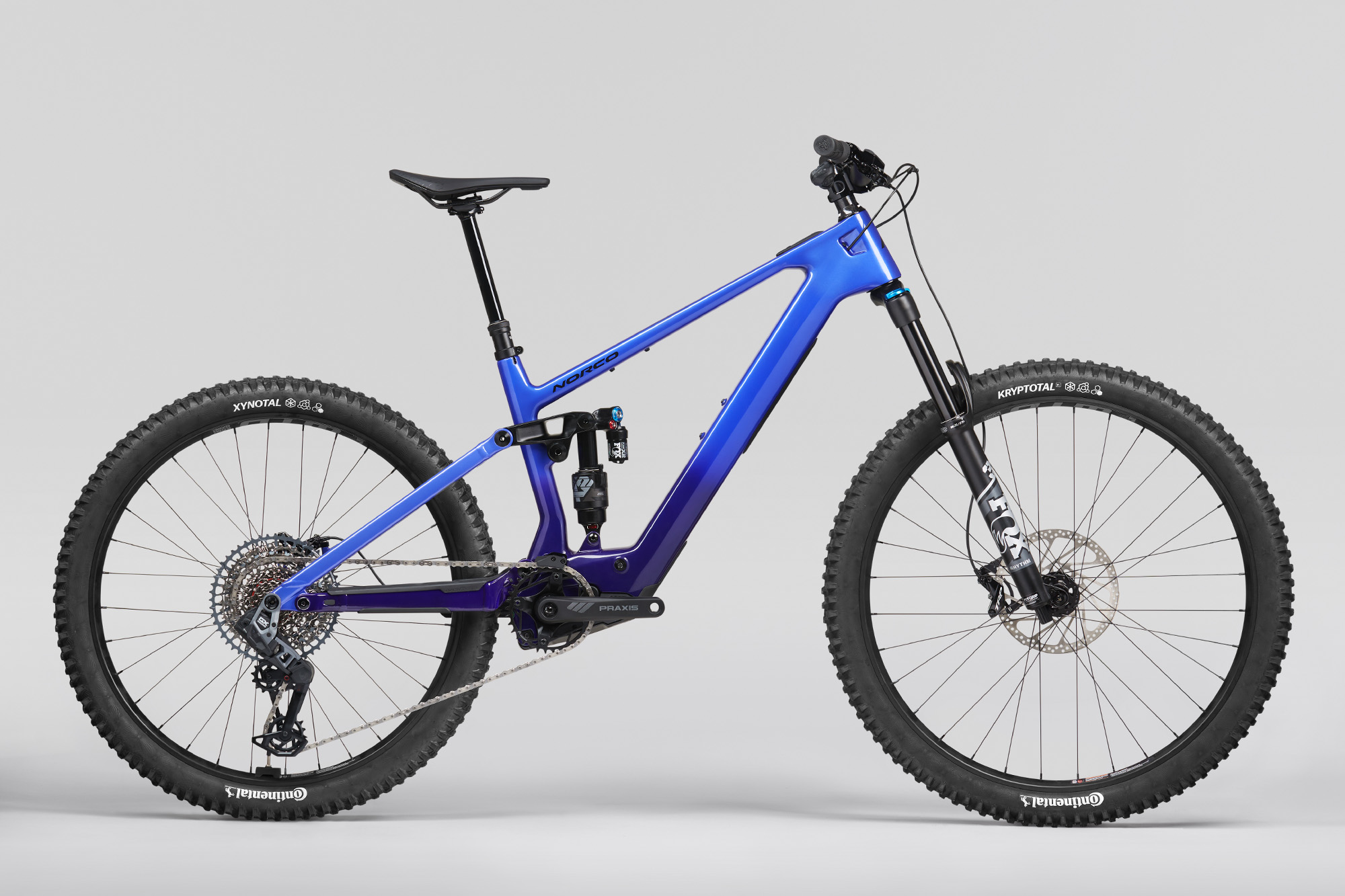
- Frame: Carbon Front Triangle / Alloy
- Chainstays and Seatstays
- Drivetrain: Shimano Deore 12 Speed
- Motor: Bosch Performance Line SX
- Battery: 400 Wh
- Fork: RockShox (150 mm) – Model TBD
- Shock: RockShox Deluxe Select+
- Brakes: TRP Slate EVO with 203 mm front and 180 mm rear rotors
- Wheels: Bear Pawls hubs with WTB ST Tough 32H rims
- Dropper Post: TranzX YSI34 (Size 1: 125mm; 2: 150 mm; 3: 170 mm; 4 & 5: 200 mm)
- Frame: Carbon Front Triangle / Alloy Chainstays and Seatstays
- Drivetrain: SRAM GX Eagle AXS Transmission
- Motor: Bosch Performance Line SX
- Battery: 400 Wh
- Fork: RockShox Lyrik (150 mm)
- Shock: Fox Float X2 Performance Elite
- Brakes: TRP Trail EVO with 203 mm front and 180 mm rear rotors
- Wheels: Bear Pawls hubs with WTB KOM Trail 32H rims
- Dropper Post: TranzX YSI08FL Rad+ (Size 1: 125mm; 2: 150 mm; 3: 170 mm; 4 & 5: 200 mm)
- Frame: Carbon
- Drivetrain: SRAM XO Eagle AXS Transmission
- Motor: Bosch Performance Line SX
- Battery: 400 Wh
- Fork: Fox 36 Performance Elite (150 mm)
- Shock: Fox Float X2 Performance Elite
- Brakes: SRAM Code Silver Stealth with 200 mm front and 180 mm rear rotors
- Wheels: Crankbrothers Synthesis Alloy
- Dropper Post: OneUp (Size 1: 120mm; 2: 150 mm; 3: 180 mm; 4 & 5: 210 mm)
- Frame: Carbon
- Drivetrain: SRAM XX SL Eagle AXS Transmission
- Motor: Bosch Performance Line SX
- Battery: 400 Wh
- Fork: RockShox Pike Ultimate (140 mm)
- Shock: RockShox Deluxe Ultimate
- Brakes: SRAM Level Ultimate Stealth with SRAM Centerline X 180 mm rotors
- Wheels: Industry Nine 1/1 hubs with Crankbrothers Synthesis Carbon Enduro rims
- Dropper Post: OneUp (Size 1: 120mm; 2: 150 mm; 3: 180 mm; 4 & 5: 210 mm)
FULL REVIEW — Norco Fluid VLT 130
Dylan Wood: There’s more variety than ever before in the light-assist eMTB market, and every brand seems to have its own offering (or two), providing their take on what they think makes a good lightweight electrified mountain bike. We’ve spent the last few months on Norco’s shorter-travel option of their two Fluid VLT eMTBs, and we’re ready to weigh in. But first, check out our “Head to Head” video where Simon Stewart and I compare the Fluid VLT 130 directly to the Pivot Shuttle SL:
Fit & Sizing
Dylan Wood (5’10.5”, 160 lbs / 179 cm, 72.5 kg): Interestingly, a lot of the story of our experience on the Fluid VLT 130 lies here. While it’s always a good idea to take a thorough look over a bike’s geometry before deciding on a size, I like to give brands the benefit of the doubt when they supply a recommended size chart themselves. In the case of the Fluid VLT 130 and at 5’10.5” (179 cm), Norco has me right in between the S3 and S4 sizes. But, with Simon an inch-and-a-half taller than me at an even 6’ (183 cm), he’s more squarely in the recommended range for the S4 Fluid VLT 130, so we opted to test that size.
As it turns out, the S4 Fluid VLT 130 easily has the longest reach of any mountain bike I’ve ever been on. At 502 mm, this eMTB has a reach that is significantly longer than my typical range of about 475-485 mm. Despite that, I didn’t find the S4 Fluid VLT to be too long and stretched out when first hopping on it. Its relatively steep seat tube angle of 77.75º certainly helps here, but this bike still has a 641 mm effective top tube length in the S4 size, which is a couple of centimeters longer than I’d prefer. This created a pretty aggressive, forward pedaling position that reminds me of an XC race bike, and the S4 Fluid VLT 130’s seated fit is certainly more stretched out than any of the Large mountain bikes (motorized or not) I’ve been on.
It’s worth mentioning that the S4 Fluid VLT 130 we tested came with a 210 mm dropper in the top-end “C1” build kit. Despite being on the shorter side of the size range, I was easily able to achieve my ideal seat height of 785 mm (from the center of the bottom bracket to the middle of the top of the saddle) with a few centimeters of room to spare — those with shorter legs than me could also theoretically pull the S4 size off without modifying or swapping the dropper.
When out of the saddle and when descending, this creates a very roomy fit and a large sweet spot on the bike. It’s very easy to move about this bike without losing control either off the front or the back of the bike, but I also found it hard to get my weight exactly where it needed to be at times — more on that below.
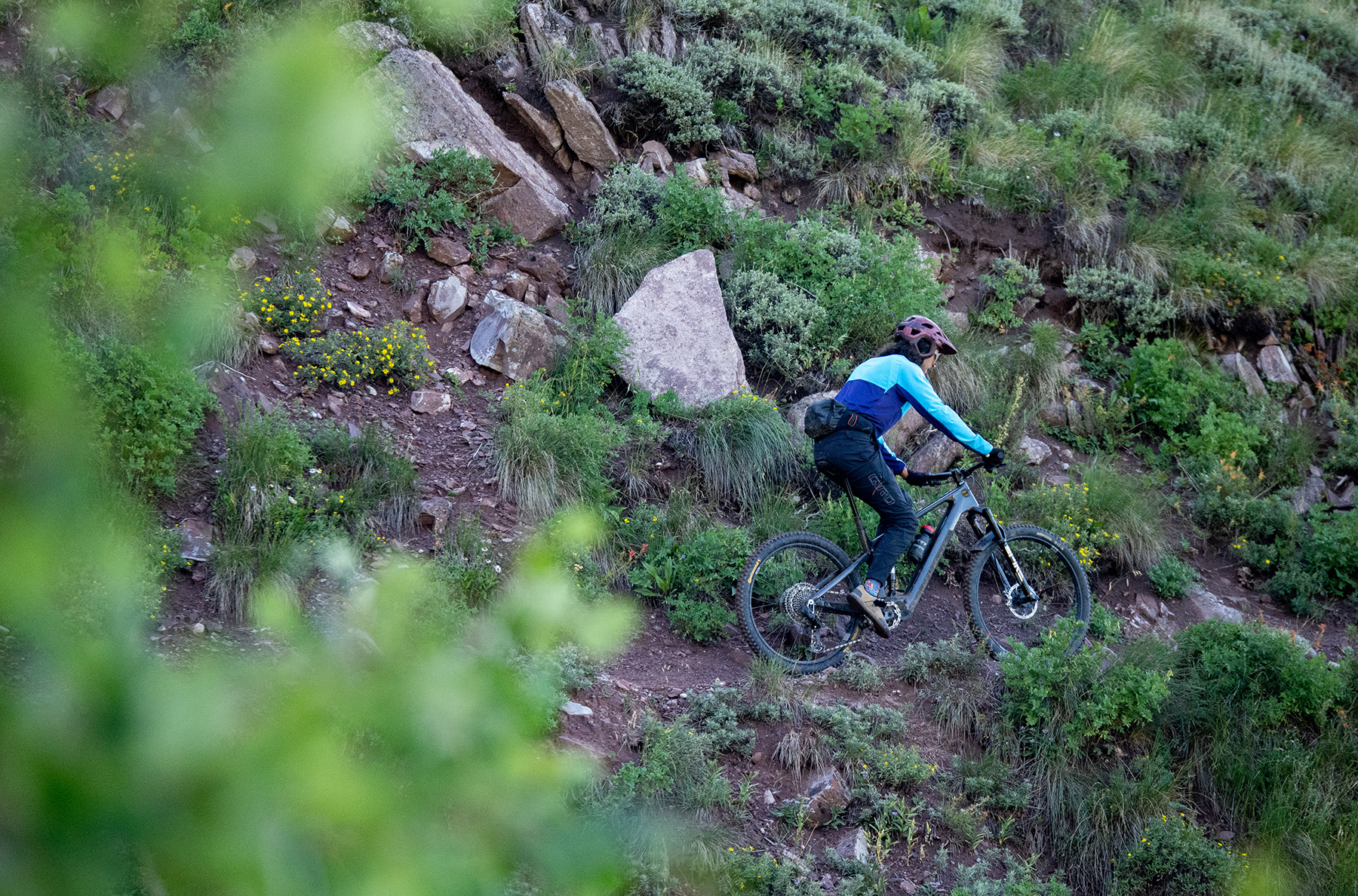
Simon Stewart (6’, 170 lbs / 183 cm, 77 kg): As Dylan said, we went with Norco’s recommended sizing for me, which left him feeling a bit more stretched out than he would prefer. However, Dylan and I usually land on the same size bikes despite our height difference; in fact, he has a slightly longer inseam, and I have to drop the seatpost a few centimeters when trading bikes. But because I have a longer torso, I think I’m less impacted by the longer reach on the size S4 Fluid VLT 130 than he is.
This is a good example of why sizing is more than just reach numbers and is affected by the other geometry numbers as well. In the case of the Fluid VLT 130, it has a steep seat tube angle (77.75º, S4) that contributes to it feeling shorter than the 502 mm of reach suggests.
But despite the fit feeling pretty good, and after spending time climbing and descending, I would prefer a shorter reach and wheelbase to better align with my riding style. I generally like a more compact fit, and favor bikes that lean towards the maneuverable and playful side over bikes that are more stretched out, and that typically offer more stability and outright speed. In this case, I would test ride the Fluid VLT 130 in the size S3, and my guess is it would probably be my choice over the size S4.
This wouldn’t be a Fit & Sizing section without me bringing up stack height, and the 634 mm for the size Large is, not surprisingly, on the low side for me. However, given the Fluid VLT 130’s decidedly Trail-focused build and travel, it feels well suited to its intentions — I didn’t even move the stem back up after getting it back from Dylan. With that said, the stack height on the size S3 is an even lower 625 mm, most likely requiring swapping in a higher-rise handlebar for me.
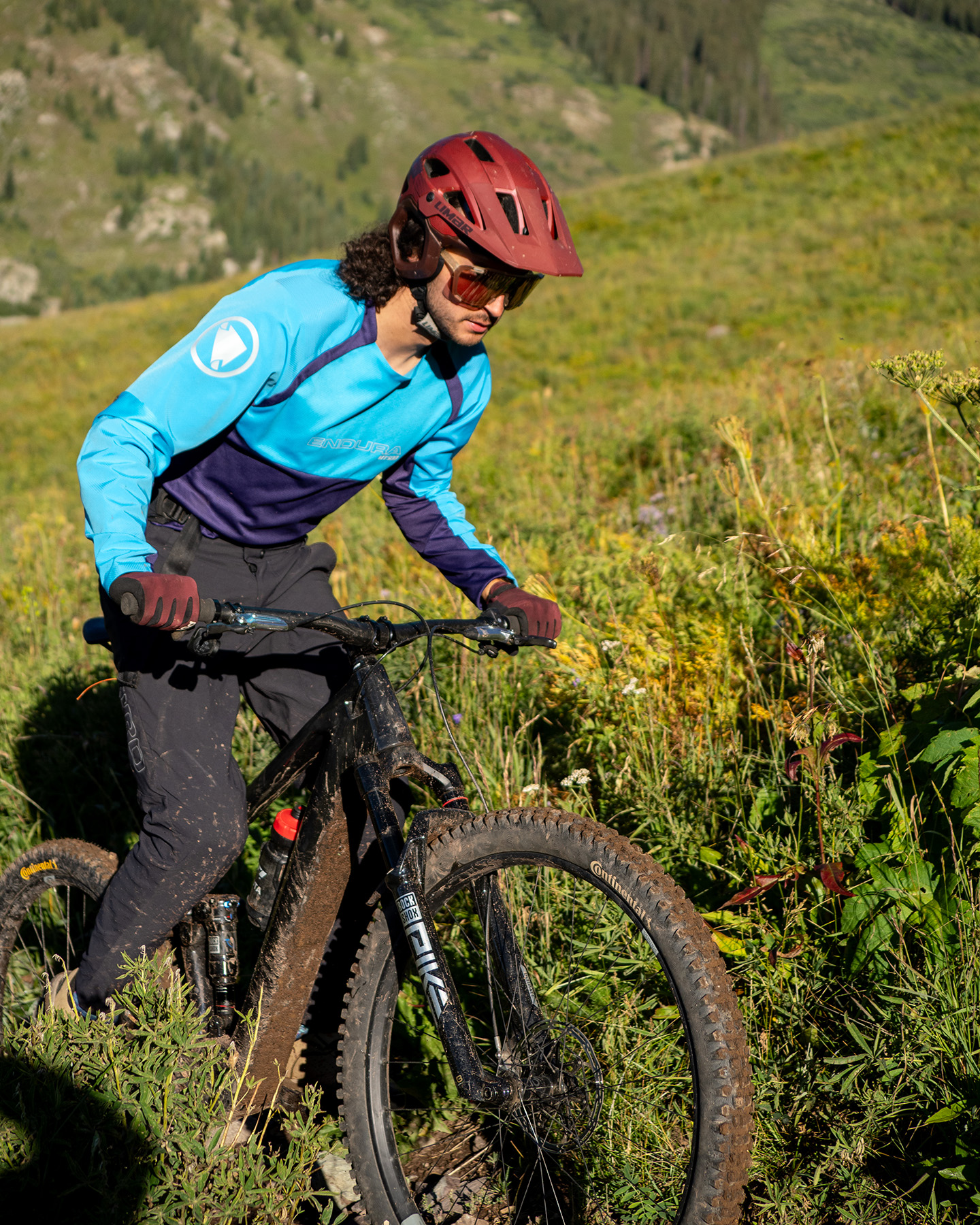
Climbing
Dylan: The Fluid VLT 130 provides a supportive and lightweight platform that, when paired with the powerful (for a light-assist) Bosch SX motor system, creates a quick and sporty climber. The Fluid VLT’s 130 mm of rear suspension is slightly biased toward the more efficient end of the spectrum, meaning that most of the rider’s and the motor’s watts are effectively fed into the drivetrain without much of it lost to movement of the rear suspension. Pair that already quick bike with Bosch’s 600-watt SX drive system, and you’ve got a pretty good climber.
The Fluid VLT 130 easily powers up smooth, consistent roads and trails, happily getting into a rhythm and buzzing away at miles and vert. When encountering more technical terrain, the Fluid VLT 130 can lack some traction when compared to similar eMTBs, but its powerful Bosch SX motor compensates for that in a lot of ways by providing the juice to power up impressively steep climbs. While this isn’t the best bike for plowing into and motoring over technical moves, it rewards a dynamic and precise approach to climbing by providing power when you need to spin up things and low weight for when you need to hop the bike up some steep ledges.
The Fluid VLT 130 has another point in its favor on the way up — at only 39.28 lbs (17.86 kg), this is a very lightweight eMTB. Combined with the powerful Bosch SX light-assist system, that low weight results in quick acceleration, especially when the bike is already in motion (light-assist systems with more torque, such as the Fazua Ride 60, can offer better acceleration from a standstill). We’ll be chatting more about how the Bosch SX system plays into the Fluid VLT 130’s performance as a whole in the “Drive System and Range” section below.
Simon: The Fluid VLT 130 is one the fastest climbing light-assist eMTBs I’ve been on, to the point that it even had me questioning if it could keep up with full-power eMTBs. The combination of a sub 40 lb weight with the Bosch SX motor’s 600 watts, plus efficient suspension, give the Fluid VLT 130 near full-power eMTB climbing performance on smoother trails or two-track — the caveat being, you have to work for it by spinning a high cadence (80-100 rpm) to extract the full potential from the Bosch SX motor. I mention smoother trails and two-track because I find the necessary high cadence to make it challenging to finesse awkward climbing moves that require high levels of balance and precise line control — in these situations, I prefer motors that have more torque available at lower cadences.
Climbing technical terrain on the Fluid VLT 130 is a bit of a mixed bag for me. The long reach helps shift weight over the front to keep it tracking well on steep sections, but if I lost momentum, I noticed it was often easy to break rear tire traction when re-applying power — Dylan touched on this above, but with so much room to move about the bike, it was sometimes tricky to find the right place to balance traction and steering control.
I agree with Dylan that the low weight is definitely an asset when tackling moves that require aggressively maneuvering up ledges, and the VLT 130 feels more like a non-powered bike there — for which my arms and shoulders are thankful.
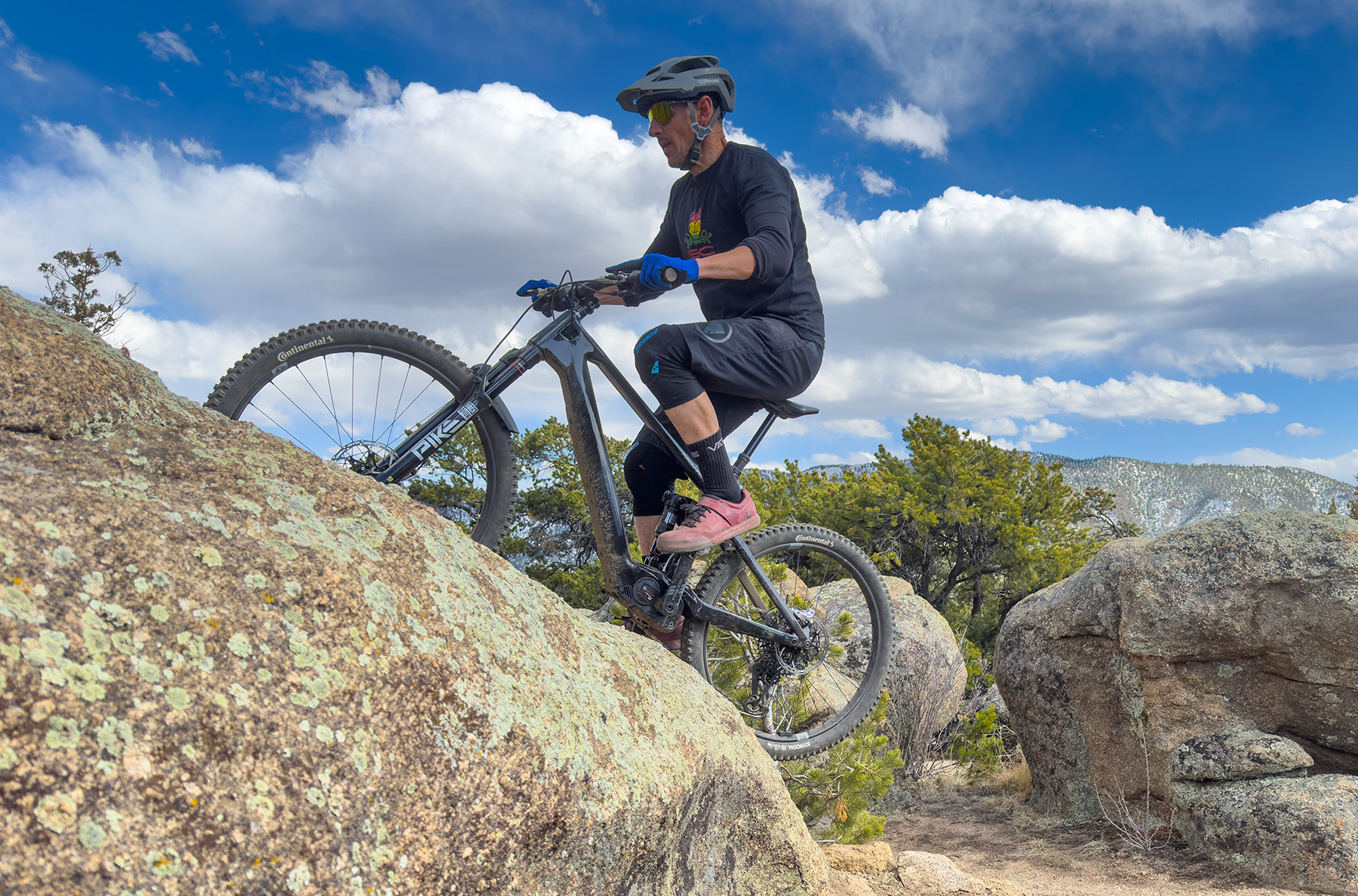
Descending
Dylan: The Fluid VLT 130 continues to be a sporty and responsive bike on the way down, but here is where its long reach and subsequently long wheelbase become more of a factor. The Fluid VLT encourages a dynamic riding style, taking advantage of its low weight to move the bike around and over trail obstacles. It’s a short-travel Trail eMTB to begin with, and its suspension is not especially plush. So rather than encouraging the rider to plow through trail obstacles and chunky rock gardens, the Fluid VLT 130 does better with a more precise approach, utilizing the bike’s low weight and poppy character to strategically unweight and re-weight the bike through rough sections.
Even though the S4 Fluid VLT 130’s suspension is not the smoothest and most confidence-inspiring, it makes up for this in many ways with its long reach and wheelbase. It has a lot of inherent stability with such a long platform underneath you, creating a huge sweet spot. It’s easy to just sit between the wheels of this bike and let the bike move underneath you without worrying about getting too far forward or back. I found this helpful on fast, straight trails, where the Fluid VLT had a surprisingly stable and surefooted feel, given how responsive its only 130 and 140 mm (rear/front) of suspension feels.
The downside is that I sometimes struggled more in tight, steep, and/or janky terrain. Such a long bike can be a handful in tight, flat corners, such as switchbacks, where I struggled with finding the right fore-aft balance to effectively steer the bike around corners without losing much traction on one end or the other. What this bike’s geometry (in the size S4 we tested) allows in stability, it also sacrifices in maneuverability, with the Fluid VLT 130 oftentimes being a handful to whip around in tight sections of trail.
While the Fluid VLT 130 is very poppy and easy to get into the air, I didn’t find it to be very playful in other ways. This is somewhat surprising, given the Fluid VLT 130 uses a dedicated mixed-wheel setup in every size. I typically find that mullet bikes tend to be a bit more playful and easier to lean into corners, but the long S4 Fluid VLT 130 didn’t exhibit these characteristics.

Simon: Before my first ride on the Fluid VLT 130, I went into Norco’s Ride Aligned setup guide and followed the recommendations. I could tell it felt impressively dialed right away, and when I started over and set it up on my own without using the setup guide, the Ride Aligned settings were incredibly close to my settings that I settled on using sag as a guide for initial air pressure and feel to set up the rebound and compression damping for my riding style. The suspension feel is on the firmer side, but I came away with a better impression of its small bump sensitivity than Dylan. And although it doesn’t necessarily come across as having more than 130 mm of travel, it doesn’t bottom out a ton either.
I was immediately surprised by how much pace was available on the Fluid VLT 130, and with such little drama considering the travel and lightweight build. Like Dylan said, you have to be a very dynamic rider, because it wasn’t hard to overwhelm the suspension if you weren’t being very active, which was especially noticeable when getting tired.
One of the interesting things about the Fluid VLT 130 is that, despite being a mixed-wheel size bike, I think it has more in common with dedicated 29ers in regards to its handling. I typically love how mullets corner, yet cornering on the Fluid VLT 130 is an area where we didn’t get along. I never really got comfortable throwing it into corners and was consistently blowing them more often than nailing them. I think the same “huge sweet spot” that Dylan talks about when describing its straight-line stability (and comes from the long reach and wheelbase), turns into a relatively small sweet spot when cornering. And I agree with Dylan that the Fluid VLT 130 isn’t particularly playful, again going against what we usually expect from mixed-wheel size bikes.
Overall, the Fluid VLT 130 is more stable and confident going fast in a straight line than I expected, but it is also less playful, and not as much fun in the corners as I might have hoped. It’s lively and poppy, which in combination with its low weight gives it an engaging quality, but it does require the rider to be switched on to fully unlock its potential.
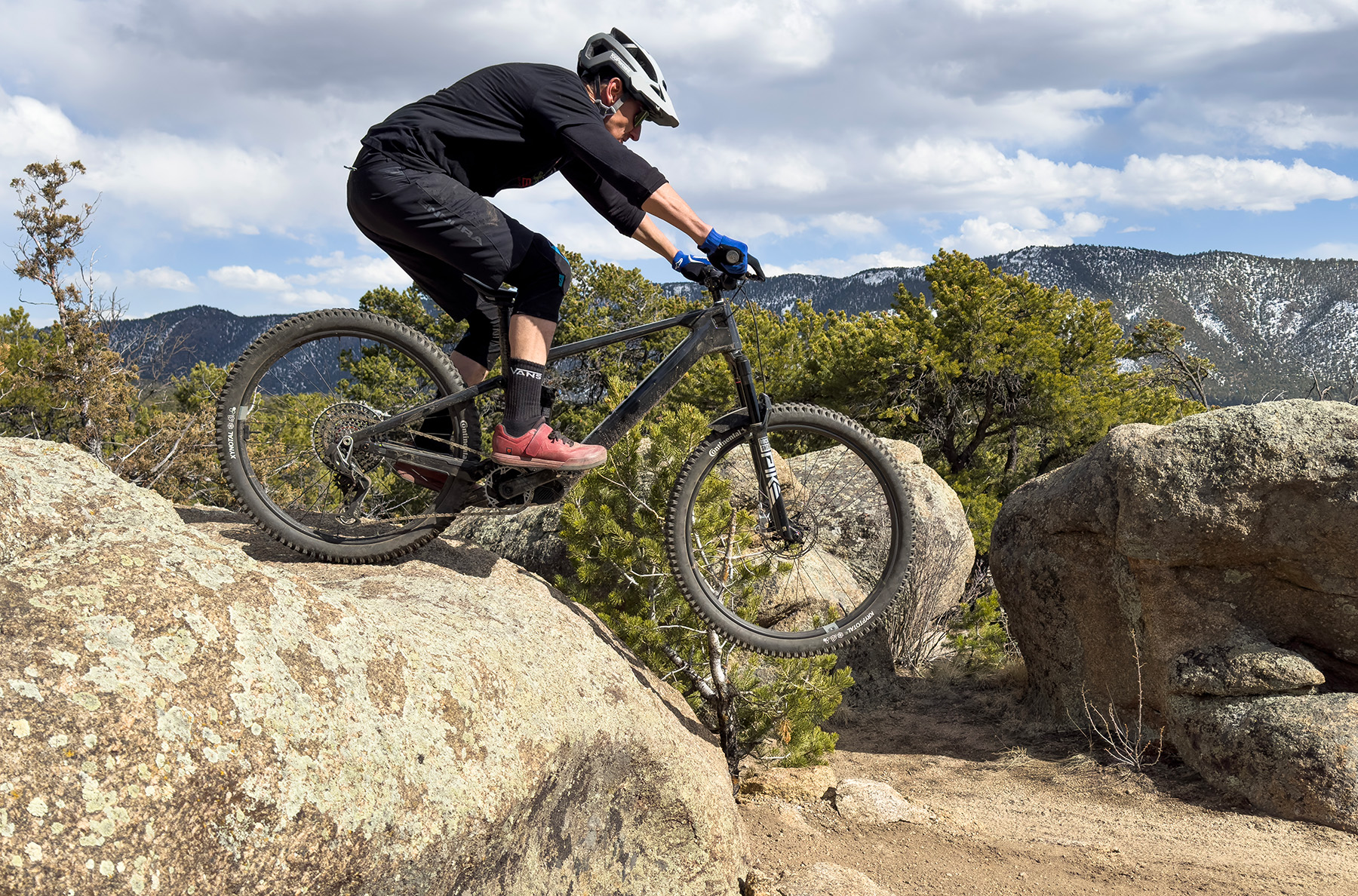
The Build
Dylan: It’s impressive that Norco was able to achieve such a low weight for the S4 Fluid VLT 130, but they certainly made some compromises to get there. The most notable of these are the brakes on this bike. While I’d be more than happy to use the SRAM Level Ultimate Stealth brakes with 180 mm rotors on a ~25 lb (11.3 kg) XC bike with fast-rolling tires, they undoubtedly crippled the Fluid VLT 130’s descending performance. I simply couldn’t squeeze these brakes hard enough to get them to adequately slow the bike down on even moderately steep descents, and the small 180 mm rotors got red-hot quickly and braking performance continually worsened over the course of a long descent. I get that low weight was a goal here with the Fluid VLT 130, but XC-level brakes have no business on this bike.
The RockShox Pike Ultimate fork and Deluxe Ultimate inline shock contributed to this bike’s responsive and poppy feel but definitely struggled in chunky terrain, where a lack of steering precision was noticeable up front, as was a lack of traction out back. Again, understandable moves for creating such a light eMTB, but I certainly wouldn’t complain about an extra pound or two if it meant more capable suspension on the Fluid VLT 130 (which, to be fair, is basically the premise of their slightly longer travel and slightly heavier Fluid VLT 140).
The Crankbrothers Synthesis Carbon Enduro wheelset was a highlight on this bike, and despite lots of hard miles, they stayed true and properly tensioned throughout the course of our entire test period. I think this spec is a great example of keeping weight low without giving up too much performance. The Fluid VLT 130 also helped me become a fan of Continental’s tire offerings, and I really enjoyed the Kryptotal up front and Xynotal out back. I did happen to get a nasty cut in the sidewall of the Xynotal, though, rendering the tire useless, and I could appreciate the burlier “Enduro” casing version of this tire out back in place of the “Trail” casing that is stocked.
I also really enjoyed the SRAM XX Transmission drivetrain on the Fluid VLT 130. The Transmission’s excellent shifting under load is a great pairing for any eMTB, and I think that the drivetrain is a fine place to save weight on this bike.
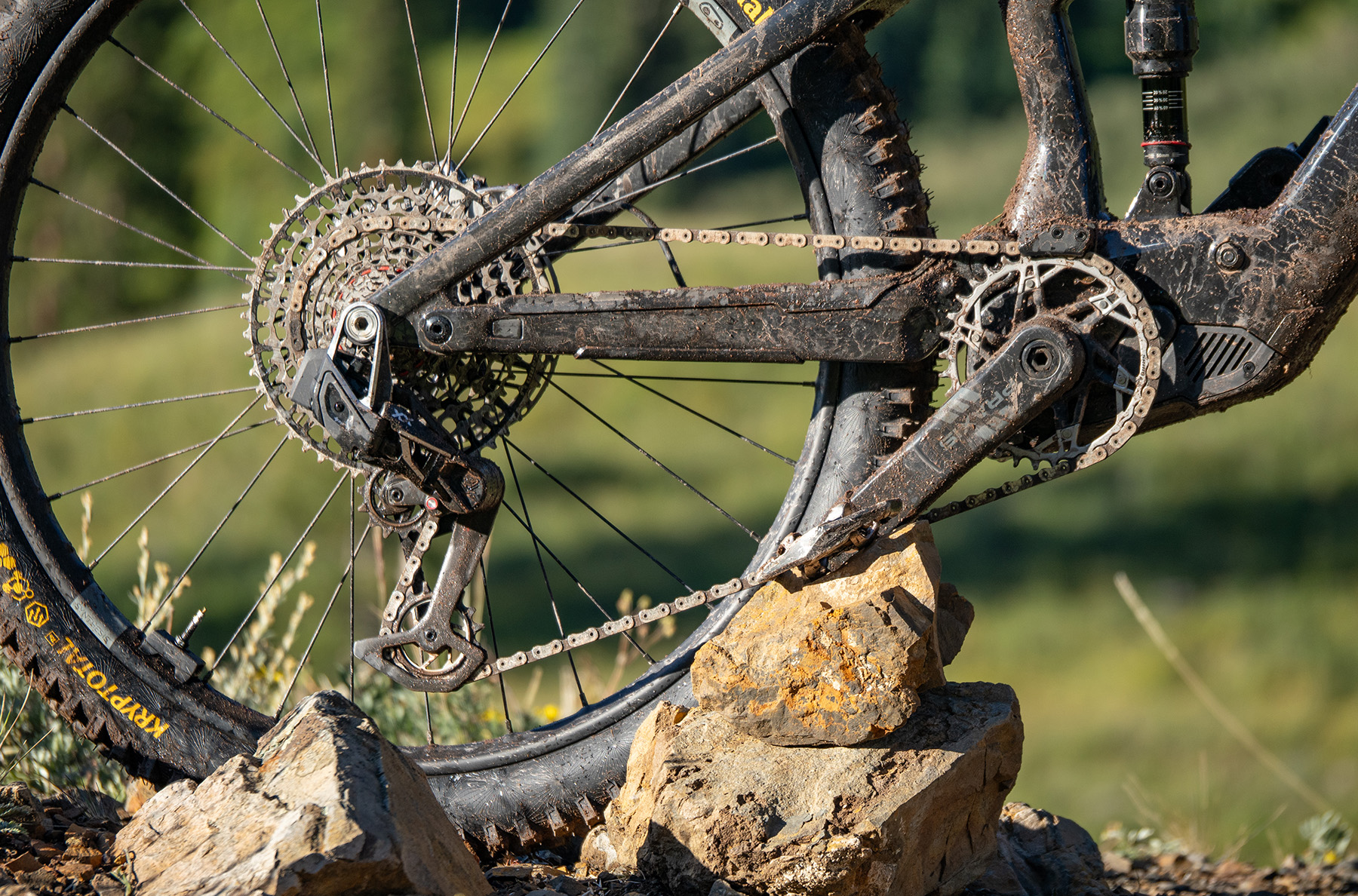
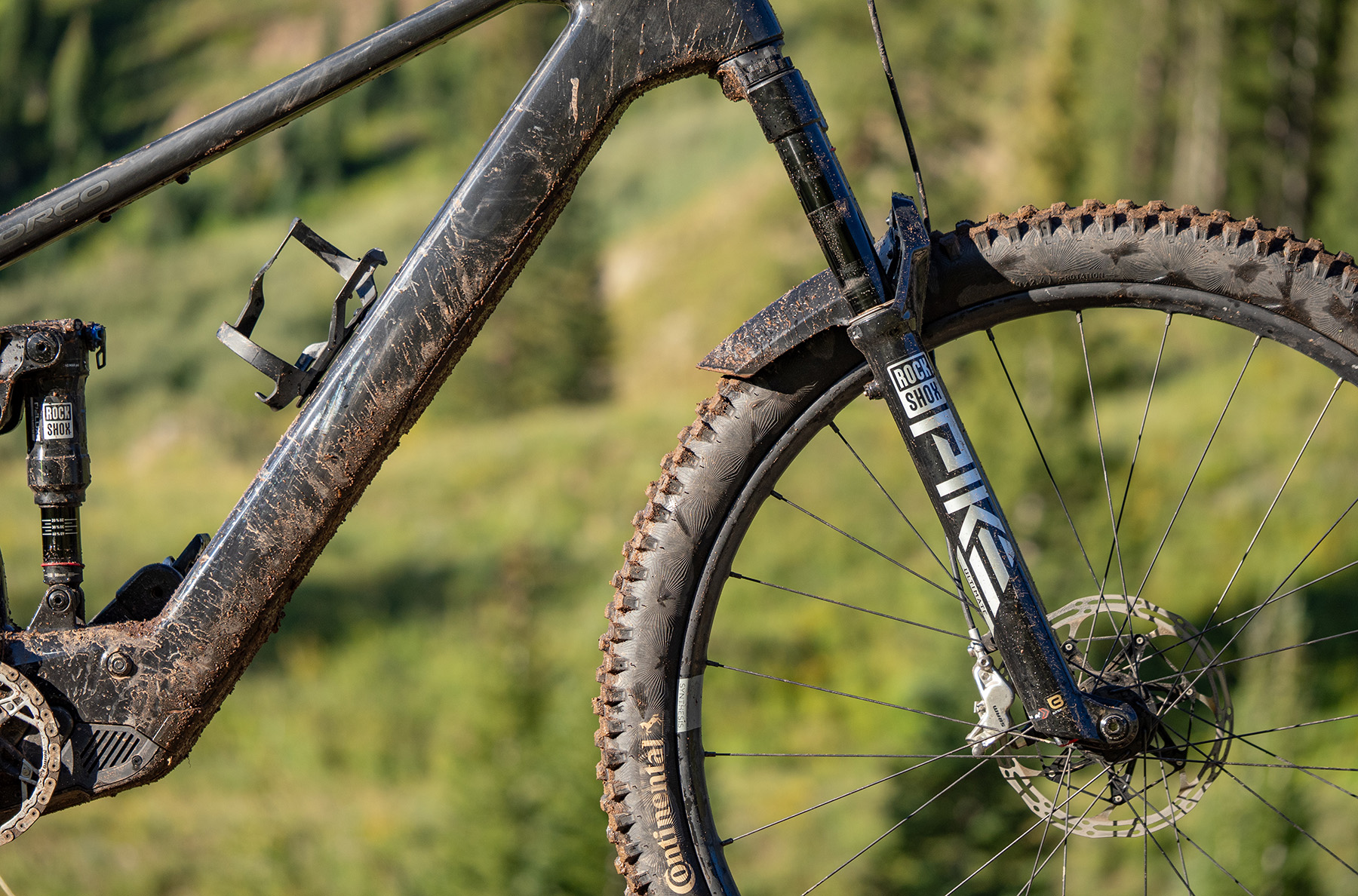

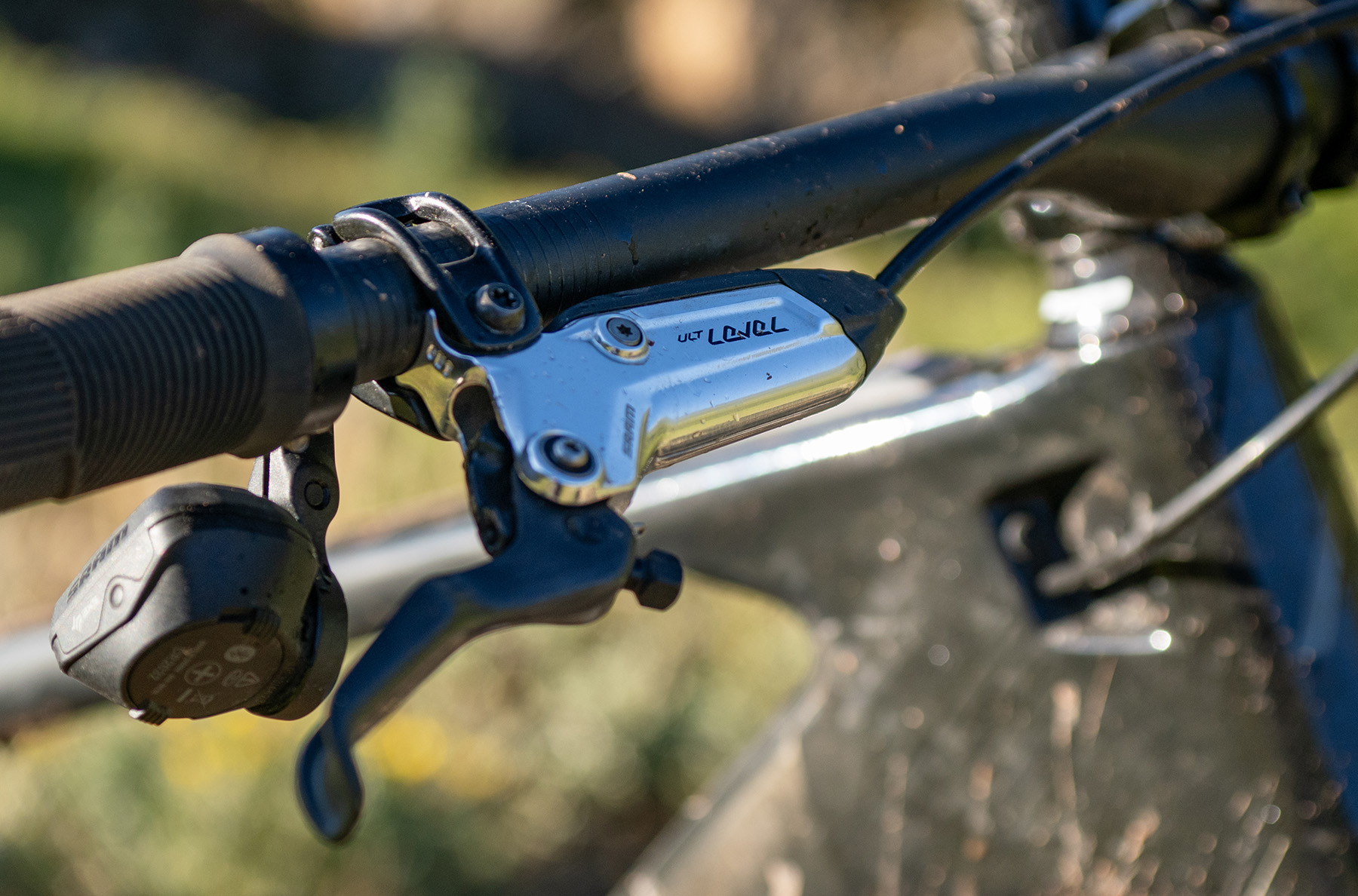
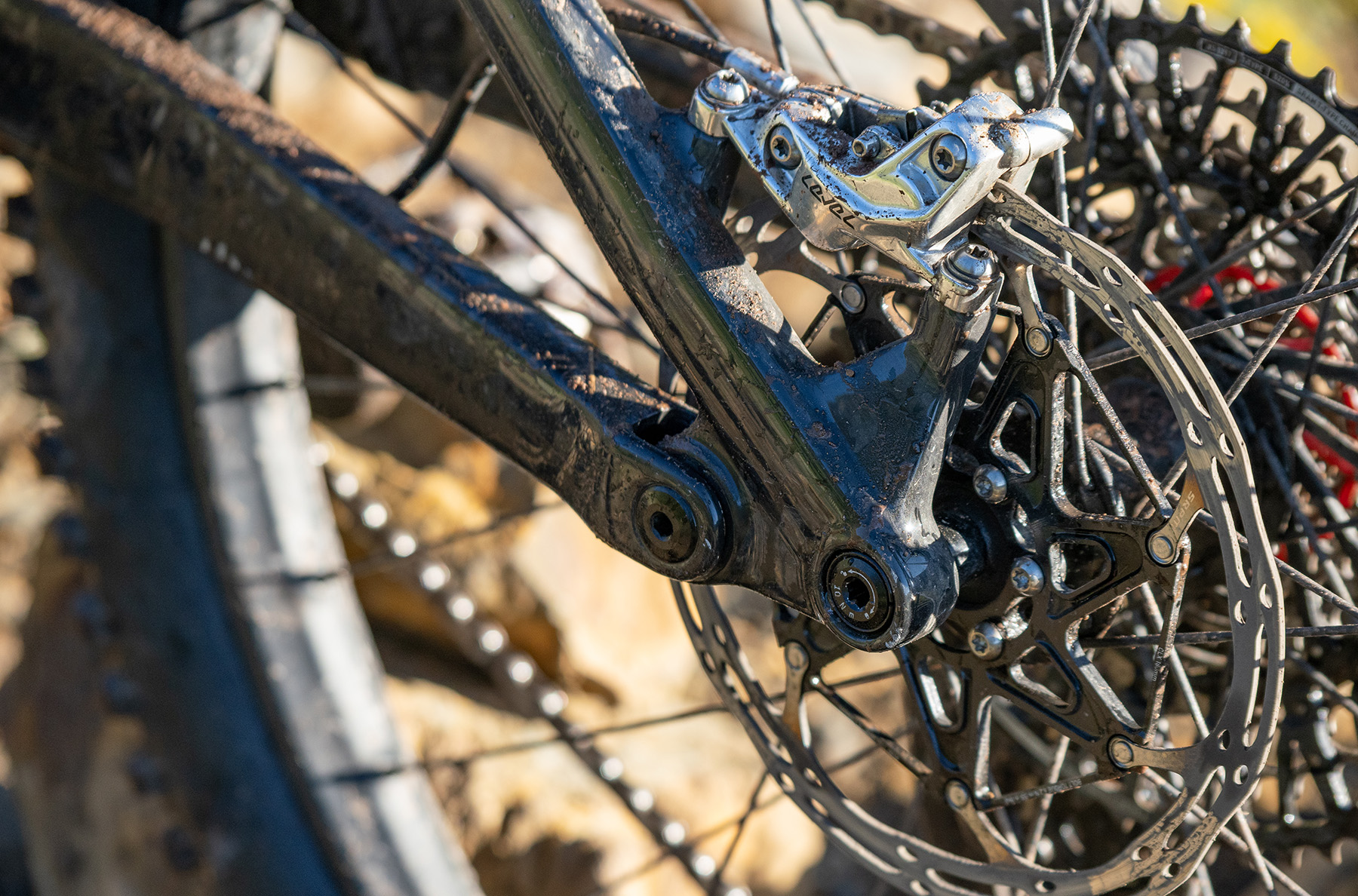

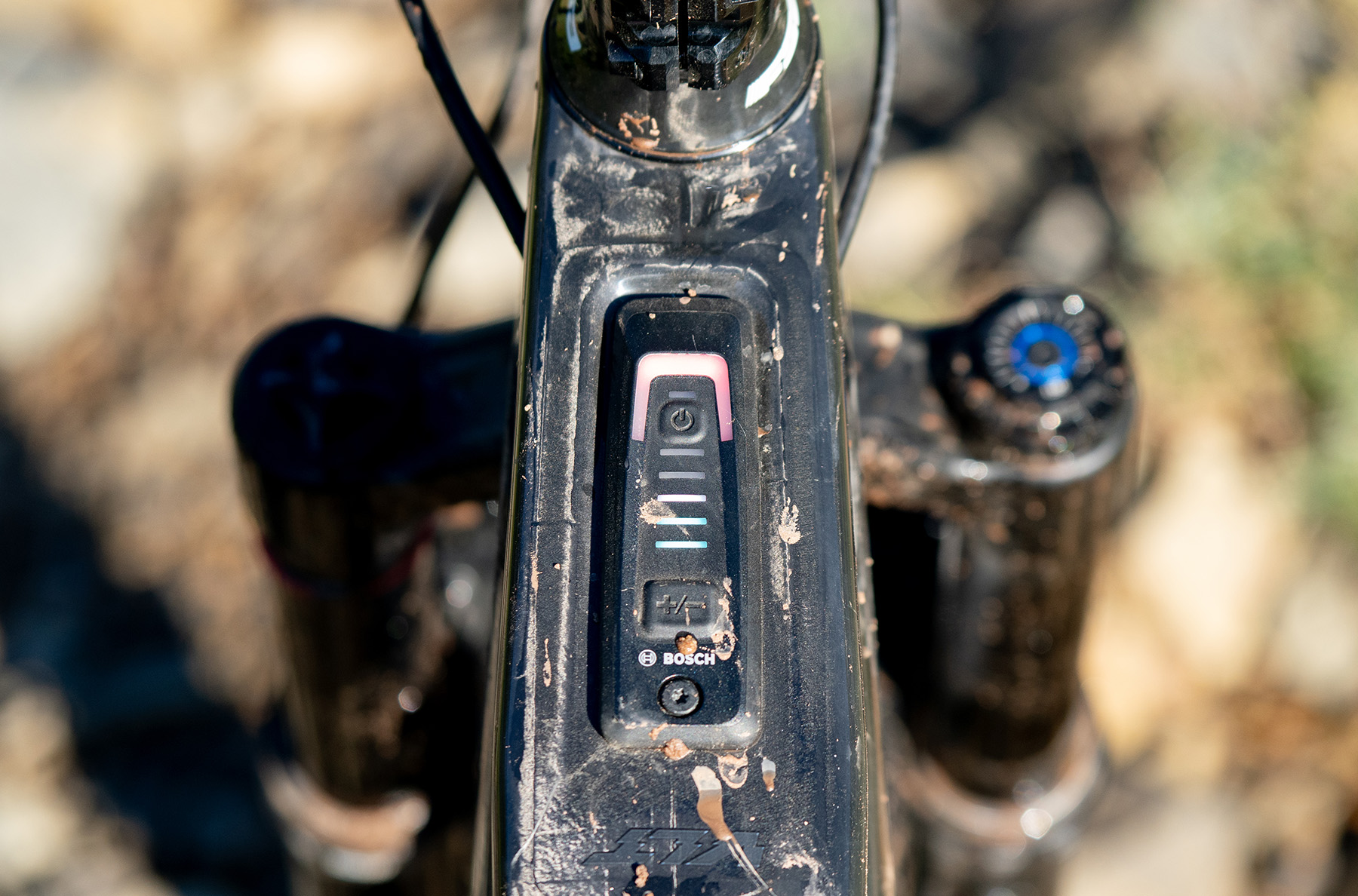
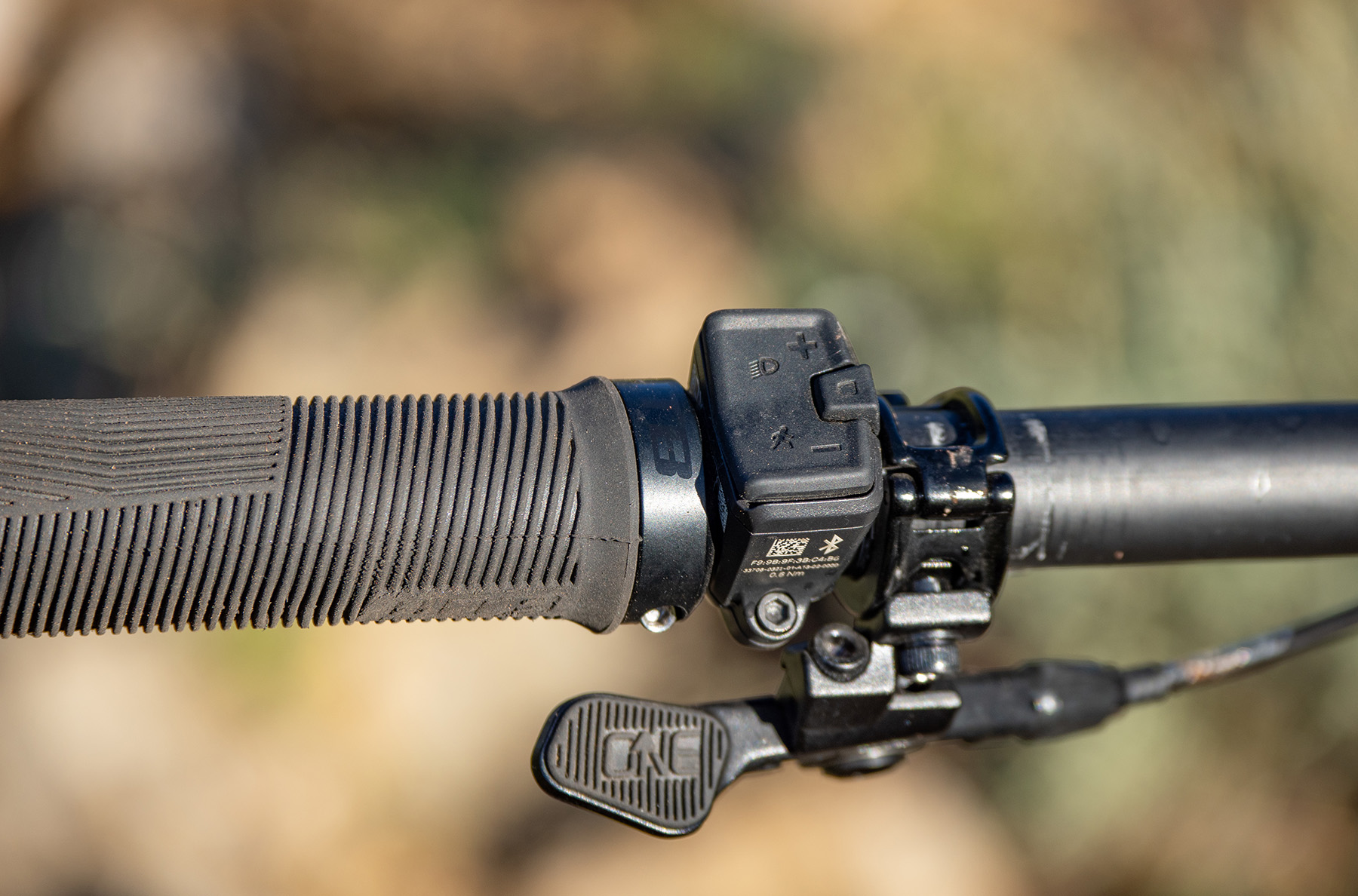
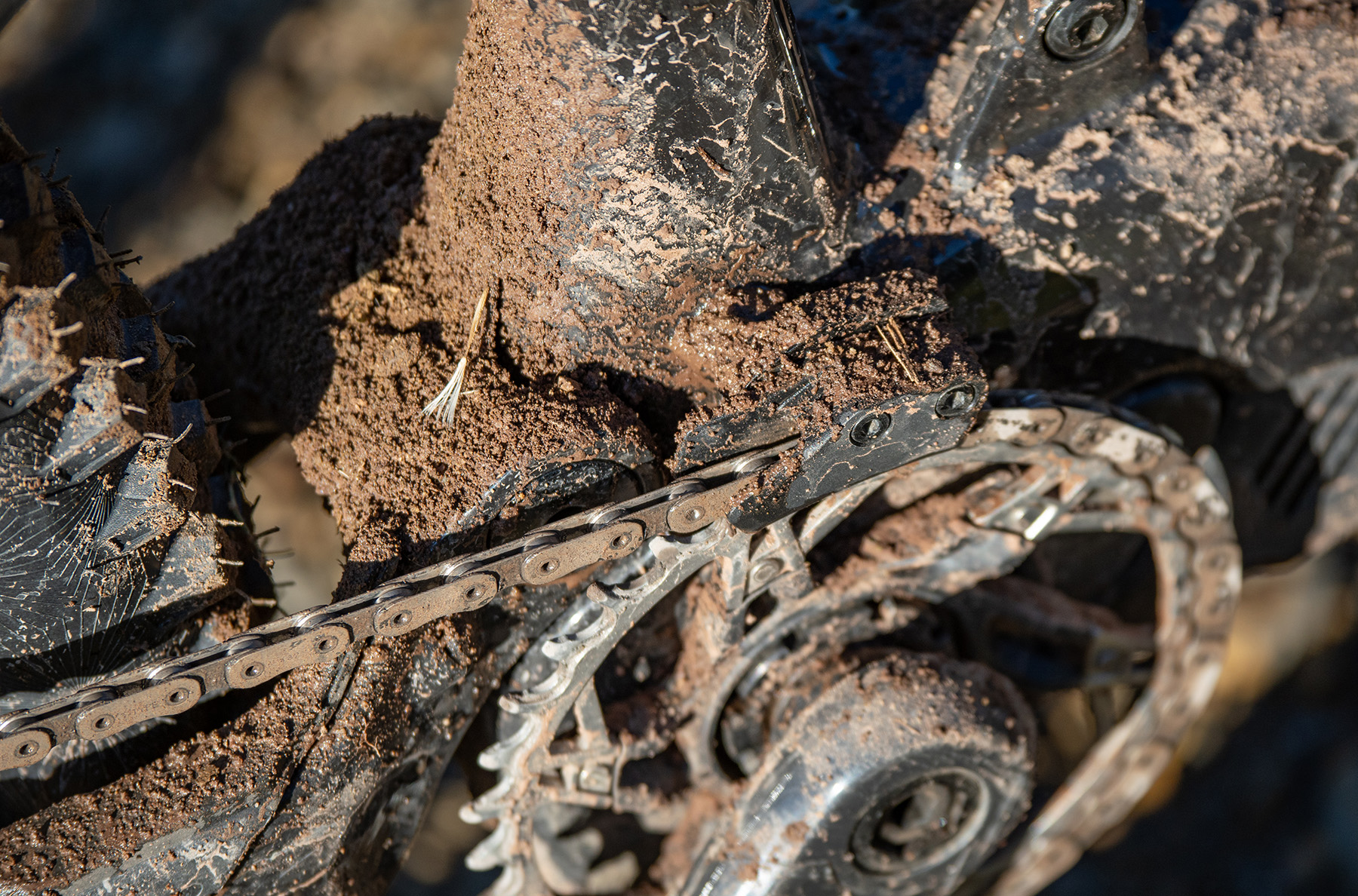
Simon: Dylan and I share the same opinion on the Fluid VLT’s spec, and I agree that the lightweight component decisions negatively affected some areas of its performance. But we both definitely gravitate towards trails on the rowdier end of the spectrum when riding eMTBs. A lot of that has to do with how accessible these kinds of trails are when you have a motor — riding straight up the fall line on the steep moto trails we have in our area just isn’t much fun without an eMTB.
With that said, I appreciate the low weight that resulted from the build, but honestly, eMTBs aren’t as sensitive to weight as non-powered mountain bikes are, so like Dylan, I would take the few-pound penalty for burlier components. I think what we are trying to say here is that the Fluid VLT 140’s builds look like a better match for the terrain Dylan and I like to ride.
Drive System and Range
Dylan: The Bosch SX motor is easily my favorite thing about the Fluid VLT 130. This excellent light-assist system provided loads of power, especially relative to its low weight. Though, with just a 400-watt-hour battery on the Fluid VLT 130, this bike is pretty limited when it comes to its range.
As Simon mentioned earlier, the 600-watt peak power of the Bosch SX motor system almost allows it to keep up with full-power eMTBs. It definitely tops the other light-assist systems we’ve tried in terms of its overall speed and power. At the end of the day, though, it’s still a light-assist system, evidenced by its 55 nm of torque, whereas full-power eMTBs are able to grind away at a more powerful 85 nm. Simon also mentioned the main difference that reduction in torque makes, which is a much higher ideal cadence (around 80-100 rpm) on the Bosch SX motors than just about any other drive system we’ve used. You’ve got to keep the cranks spinning pretty quickly on the Fluid VLT 130 to take full advantage of its available power.

But, once you’ve got that figured out, the SX system provides smooth power delivery that does an excellent job of matching your own input. While I can sometimes find myself getting flown off the trail and going faster than I’d like uphill on full-power eMTBs, that never happened on the Fluid VLT 130. Despite lacking in torque, this motor system is very capable of making some ultra-steep and technical moves, it just requires a bit more power from the user.
Its 600 watts of peak power don’t just come out of thin air, though, and you can burn through a full charge pretty quickly on the Fluid VLT 130. When using the SX’s highest assist level, “Turbo,” for an entire ride, the battery only lasts about 10-15 miles, or 2,000-3,000 feet of climbing. Less powerful systems paired with similar-sized batteries (such as the Fazua Ride 60) will definitely outlast the SX system on the trail, but the Bosch SX-equipped bike will also make it to the top first.
The Bosch SX system also had respectably little resistance in its motor, allowing for pretty easy pedaling when the Fluid VLT 130 fully runs out of battery, making it not too much of a burden when that happens. I think that’s pretty important given the higher likelihood of running out of battery. The Bosch SX system is also on the noisier end of light-assist motors, with high-cadence pedaling producing a high-pitch whine. I personally don’t care much about how noisy a motor is, especially when it’s a consistent noise like this, but there are quieter options out there if you care.
It’s also worth noting that the battery of the Fluid VLT made a lot of noise inside the bike, and I figured out that this was caused by one of the bolts securing the battery into the downtube chewing through some of the thin carbon around it in the downtube, creating much more play than intended. I was able to fix this by adding a thin washer with rubber on one side under the bolt, but even after that, the Fluid VLT was a pretty noisy bike on the way down, with plenty of rattling. I also don’t really mind this noise, so long as I know where it’s coming from.
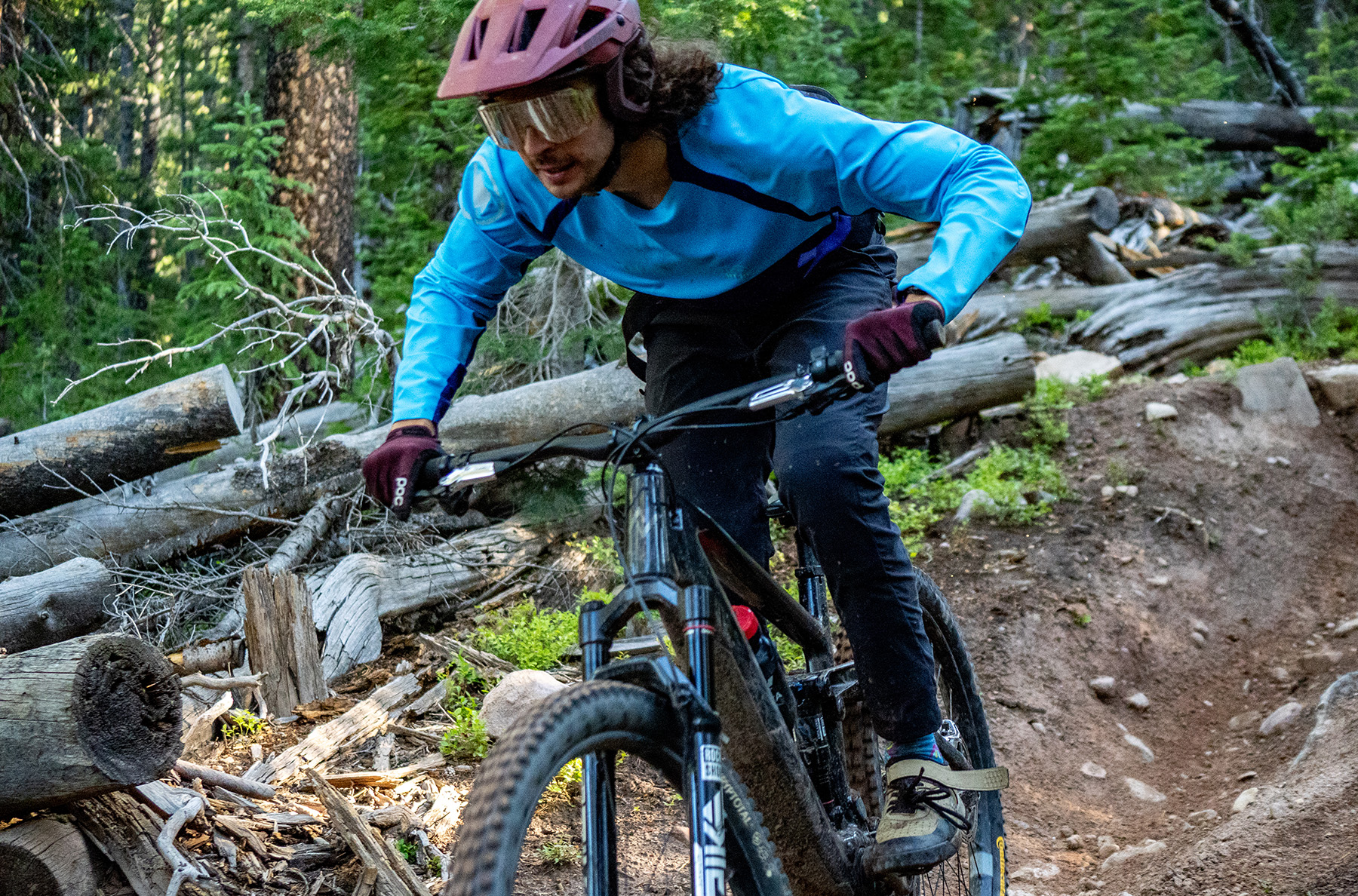
Simon: The Bosch SX motor is a little sweetheart. In a lot of ways, it reminds me of high-revving small displacement motorcycle engines. Although its 600 watts of power is equivalent to many full-power drive systems (including Bosch’s own Performance Line CX motors), it is a vastly different experience. Having to work hard as a rider to get peak power is the opposite of what you can get from a full-power drive system, which can offer peak power with very little rider input. For me, the requisite rider input is part of what I enjoy about the SX motor, and in the case of the Fluid VLT 130, adds to the engaging personality of the bike.
Bosch has been manufacturing electric motors for over a hundred years, and their experience shows, because I find their eMTB motors (including the SX motor we’re talking about here), to have a high level of refinement, which results in smooth consistent power that is intuitive to manage. And given Bosch’s long history, in addition to my own experiences with their drive systems, I have confidence in their motors from the reliability standpoint as well.
Because the SX motor is quite thirsty, and battery management is a constant consideration, I think Bosch could do with a re-design of their integrated top tube display to include actual battery percentage, instead of the current LED bar design that only gets you to within 20%. Also, I think Dylan and I agree that we would invest in Bosch’s Powermore range extender, which weighs a little over 3 Ib (1.3 kg) and attaches to standard water bottle mounts. It adds 250 Wh of battery capacity, which ups the total to 650 Wh and increases range considerably, while also helping ease battery anxiety.
I think the Bosch eBike Flow App is one of the better ones available when it comes to features and uncomplicated customization options. Like I usually do on Bosch’s full-power drive systems, I went into the App to customize the power characteristics for “Turbo” mode on the Fluid VLT 130, basically cranking it up in that mode so it has the highest power and fastest response — for more details on that, check out our Orbea Wild review. It can also turn your smartphone into a display, with real-time data, map capability, as well as other much-needed information like actual battery percentage.
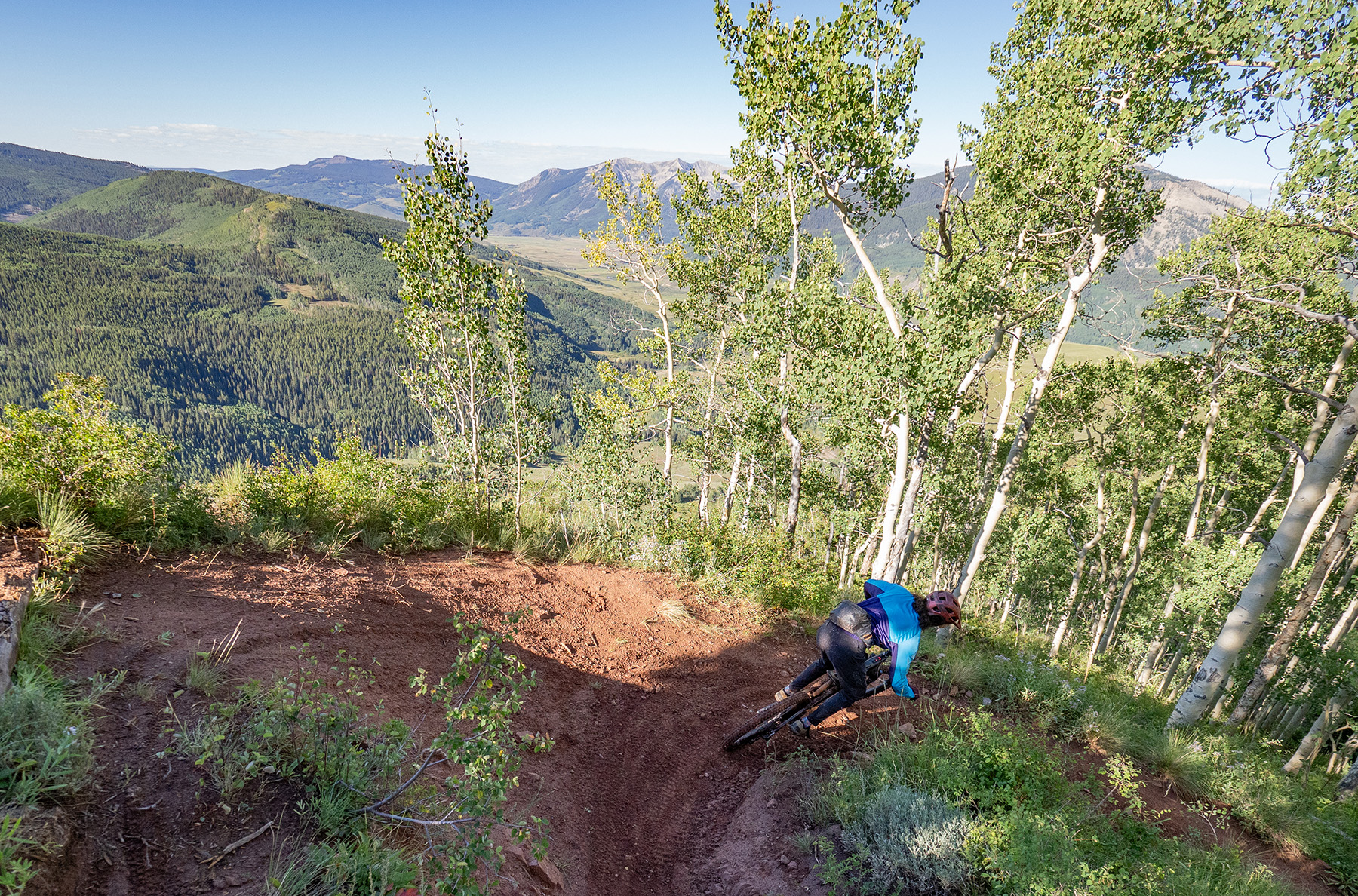
Who’s It For?
Dylan: Riders who want a responsive and sporty feel in their light-assist eMTB, both in terms of the suspension feel and the drive system itself. While the Fluid VLT 130 won’t trick you into thinking you’re on a bike with more suspension travel, it rewards an active riding style and is lots of fun on high-speed, traction-rich trails with big berms and rollers. It requires a more attentive rider in chunky and demanding terrain, and struggles a bit when things get tight and technical, but offers a big and stable platform to make up for its lack of travel. Riders ought to take Norco’s recommended size chart with a grain of salt and consider their own preferences for reach lengths, as well as the terrain they’ll be riding most.
The Bosch SX system also makes this bike best suited for riders who are after quick laps, rather than big, long eMTB adventures. This bike can get to the top of any climb quicker than just about anything else out there in the sub-40-pound (sub-19-kg) weight class and offers a more nimble and natural-feeling ride than a ~50-pound (~23 kg) eMTB for those coming from unpowered eMTBs.
Simon: Dylan is spot on for who is a good fit for the Fluid VLT 130. If a lightweight, snappy eMTB is on your list, and you’re mostly going to ride less chunky, fast trails, then the Fluid VLT 130 is a great option. However, I do see it as having a slightly narrow focus, and if that focus matches your preference, then it’s an extremely compelling choice, but if you’re after something with a touch more versatility, then I think there are better options.
I’ll emphasize Dylan’s point about sizing, since both of us would probably size down to an S3 given the choice, and add that the Fluid VLT 140 is probably a better option if you prefer the kind of rowdy trails we rode the Fluid VLT 130 on.
Bottom Line
The Fluid VLT 130 is a dynamic, lightweight offering in the light-assist eMTB category that feels more engaging in mellower terrain than many heavier, more downhill-oriented eMTBs. It’s also a great implementation of Bosch’s impressive SX drive system, which allows this bike to be about as fast as possible for how little it weighs.
Deep Dive Comparisons
BLISTER+ members and those who purchase our Digital Access Pass can check out our Deep Dive comparisons linked below. Get our Digital Access Pass to view all our Deep Dives and Flash Reviews, or become a BLISTER+ member today to get access to that and a LOT more, including the best worldwide Outdoor Injury Insurance, exclusive deals and discounts on skis, personalized gear recommendations from us, and much more.

Deep Dive: Norco Fluid VLT 130
We compare the Norco Fluid VLT 130 to the Pivot Shuttle SL, Trek Fuel EXe, Santa Cruz Heckler SL, Canyon Neuron:ONfly, Mondraker Dune XR, and Cannondale Moterra SL.
Blister’s Flash Reviews and Deep Dives are accessible to those who purchase one of our paid subscriptions
To get our comprehensive Deep Dives and our initial, unfiltered reports on new gear, become a member and receive many other services, deals, and discounts.
If you’re already an active member, please log in.
(If you’re already logged in and a member in good standing and seeing this message in error, please refresh this page in your browser.)
